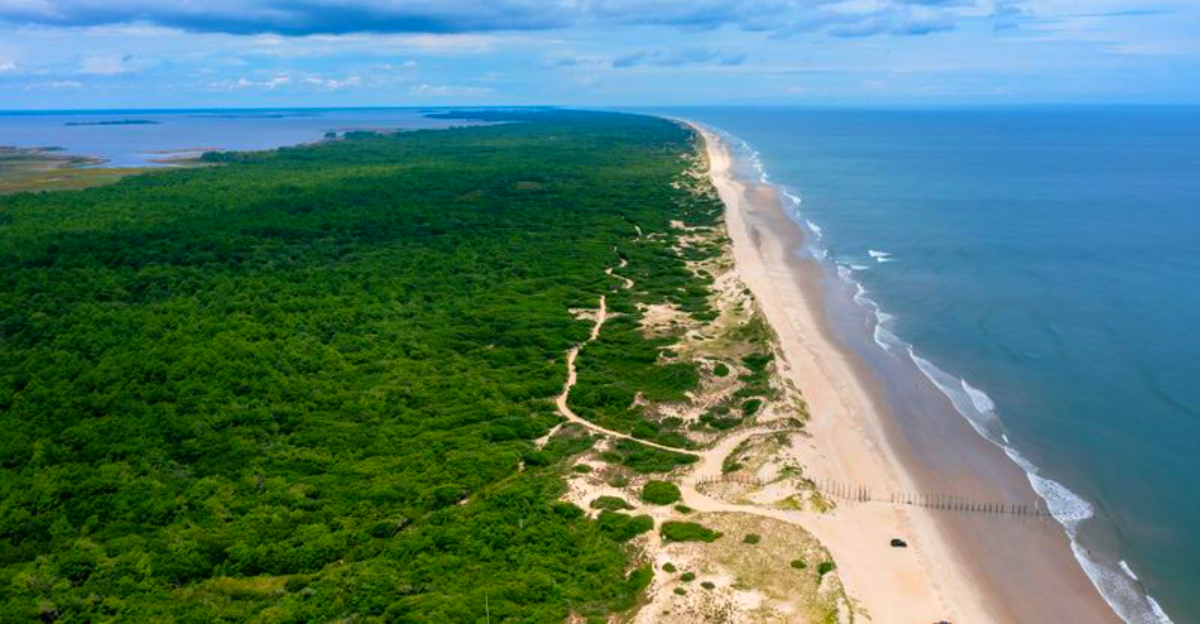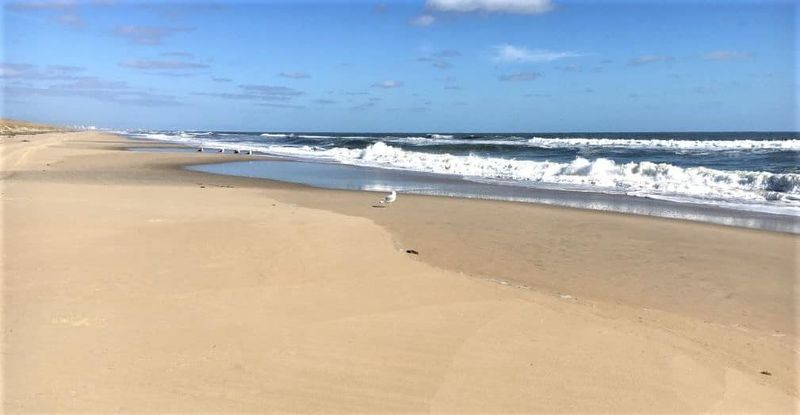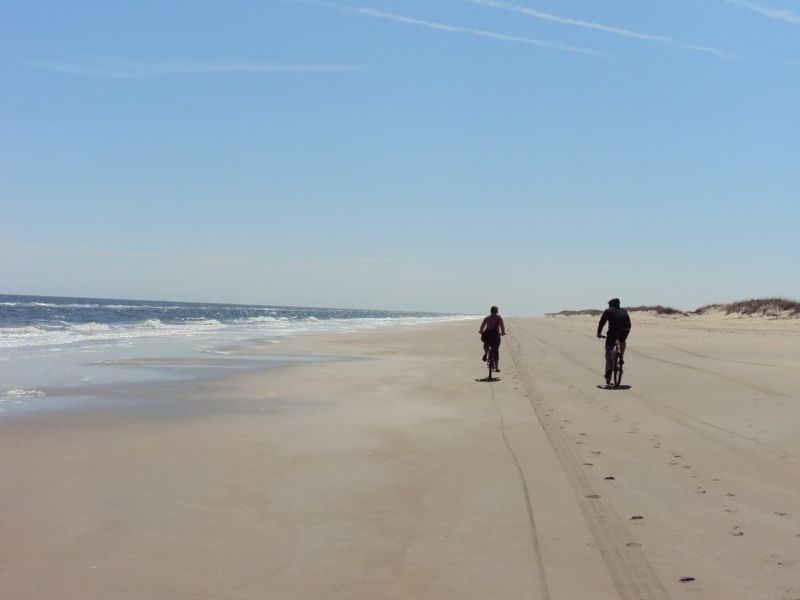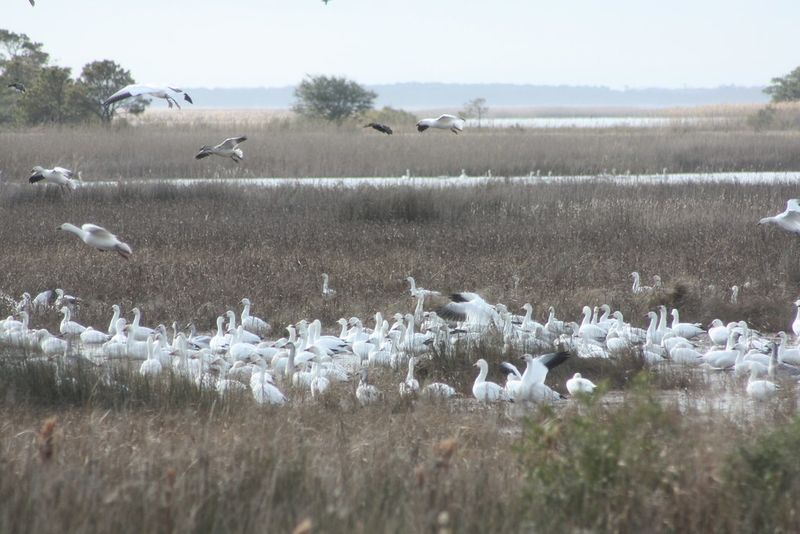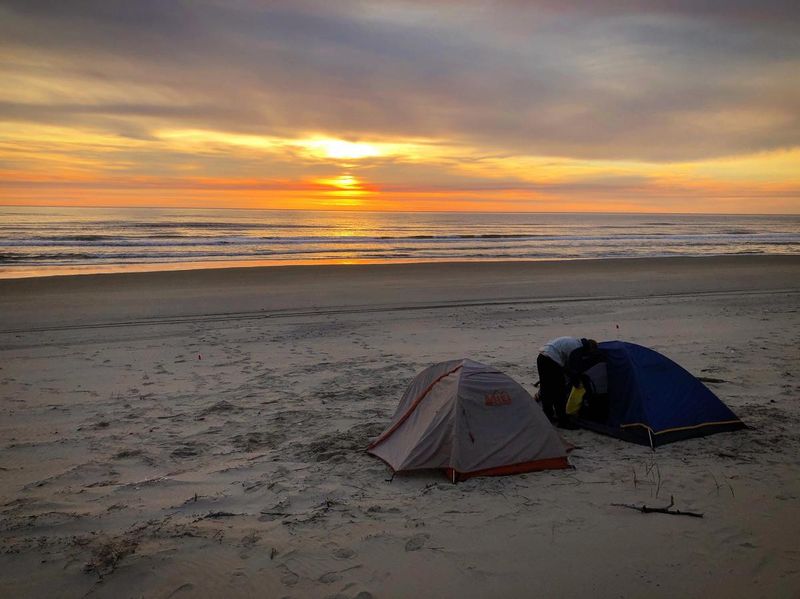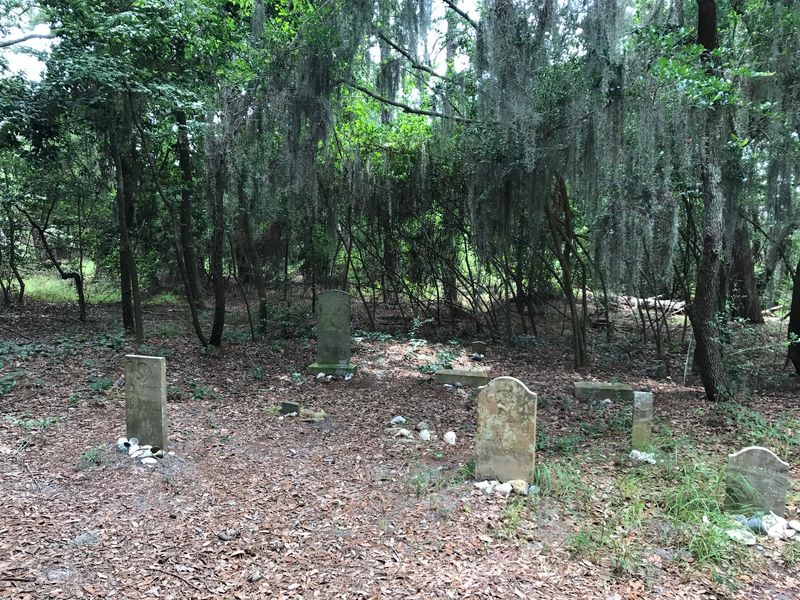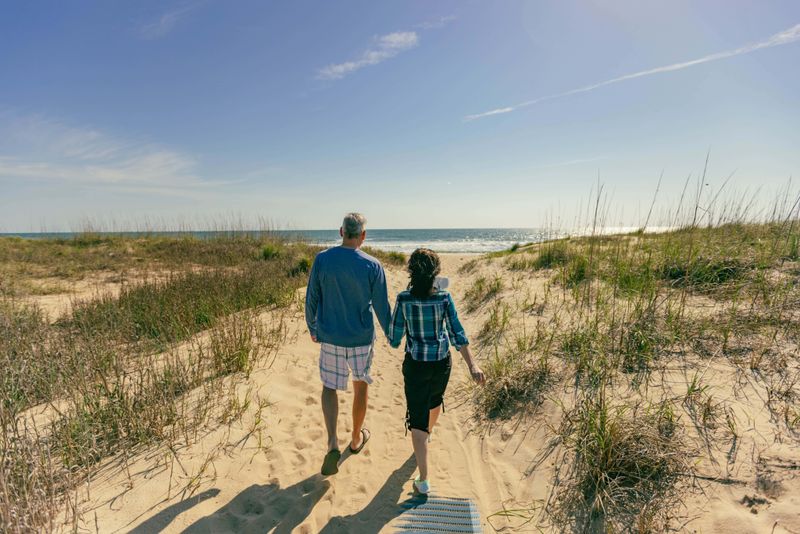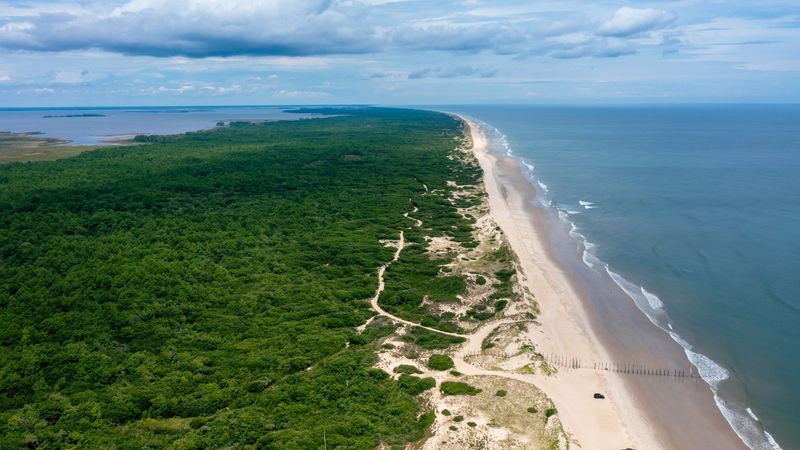This is the place where you can walk for miles on a beach without seeing another soul, where nature feels untouched and wild. False Cape State Park in Virginia offers exactly that, six miles of pristine oceanfront that most people have never heard of. This hidden gem sits at the southern tip of Virginia Beach, but getting there requires a little adventure since no roads lead directly in. If you’re craving a true escape from crowded tourist spots, this park might just become your new favorite secret.
1. It’s a Car-Free Coastal Wilderness
No roads mean no traffic noise, no exhaust fumes, and definitely no crowded parking lots. False Cape State Park stays wonderfully empty because you can’t just drive up and hop out. Instead, visitors arrive by foot, bicycle, kayak, or a special tram that crosses through the neighboring Back Bay National Wildlife Refuge.
This unique access keeps the dunes, marshes, and maritime forests in pristine condition. You won’t find food stands or gift shops here either. Pack everything you need and carry it in—that’s the trade-off for experiencing one of Virginia’s most peaceful coastal landscapes, where solitude is practically guaranteed.
2. Six Uninterrupted Miles of Beach
Forget the boardwalk crowds and neon lights of typical beach towns. At False Cape, six continuous miles of Atlantic shoreline stretch out with almost nobody on them. The sand is clean, the waves roll in steady, and you might walk an entire afternoon without passing another person.
Because the park protects this coastline from development, it remains wild and natural. Bring your own shade, snacks, and water since there are no facilities along the beach. Remember to pack out everything you bring in—this pristine stretch stays beautiful because visitors respect it and leave no trace behind.
3. A Surprising Variety of Habitats
Most parks stick to one type of scenery, but False Cape packs in an amazing mix. During a single visit, you can explore sandy beaches, rolling dunes, oak-pine maritime forests, freshwater marshes, wooded swamps, and the shores of Back Bay itself. Each habitat supports different plants and animals, making every turn feel like a new discovery.
Photographers love this diversity—you can capture coastal sunrise shots, then head inland for shaded forest scenes, and finish at the marsh for sunset reflections. Wildlife watchers benefit too, since different creatures prefer different environments. One afternoon here offers more ecological variety than most week-long vacations.
4. Serious Birding—Especially in Migration
Thousands of migrating waterfowl use Back Bay and False Cape as rest stops during their long journeys. Spring and fall bring waves of ducks, geese, swans, and shorebirds that transform the marshes and beaches into a birder’s paradise. Bring binoculars and a field guide—you’ll need them.
Raptors soar overhead hunting for prey, while coastal species like terns and plovers patrol the surf line. Even if you’re not a serious birder, the sheer numbers and variety make it impossible not to notice. The combination of protected habitat and limited human disturbance creates perfect conditions for observing birds behaving naturally in their element.
5. Primitive Camping Under the Stars
Forget glamping—camping at False Cape means getting back to basics. Several designated camp areas await hikers, bikers, and boaters willing to haul their gear in. Tents only, no RVs or trailers, and limited sources of drinking water mean you’ll need to plan carefully and pack smart.
Reservations are required, so book ahead during popular seasons. At night, with no light pollution from nearby cities, the stars put on an incredible show. You’ll fall asleep to ocean waves and wake to bird calls. It’s the kind of camping experience that reminds you why people started sleeping outdoors in the first place—pure connection with nature.
6. The Ghost of Wash Woods
Hidden in the maritime forest lies something haunting and beautiful—the remains of Wash Woods, a community born from shipwreck survivors. Today, only a cemetery and church site remain, surrounded by twisted trees and shifting sand. Walking through this area feels like stepping back in time to when people carved out lives in this remote coastal wilderness.
The weathered gravestones tell stories of families who lived, loved, and died here generations ago. It’s both photogenic and sobering, a reminder that this “undiscovered” place was once somebody’s home. The site offers a powerful history lesson about coastal life before modern conveniences made beach living easy and comfortable.
7. A Tram That Doubles as a Wildlife Tour
The Blue Goose Wildlife Tram offers the easiest way into False Cape while providing a guided nature experience. This special vehicle travels through Back Bay National Wildlife Refuge, giving passengers front-row views of the marshes, forests, and wildlife along the way. The driver shares information about the ecosystem and points out interesting sights.
Once at False Cape, you’ll have time to explore on your own before the return trip. Some tram tours include a walk to the historic Wash Woods site. Reservations are required since space is limited, and this popular option books up quickly during peak seasons. It’s perfect for families or anyone who wants expert guidance.
8. You’ll Actually Feel Far Away—Yet You’re in Virginia Beach
Here’s the most amazing part: this wild, remote-feeling landscape sits right at the edge of Virginia Beach, a major resort city. You can eat breakfast at a hotel, then spend the afternoon in total wilderness without driving hours away. That contrast makes False Cape feel almost magical—a genuine escape hiding in plain sight.
Most tourists never venture this far south, staying near the famous oceanfront strip instead. Their loss is your gain. False Cape proves that protected natural spaces can exist alongside development when people commit to conservation. It’s the ultimate hidden gem, offering adventure seekers an authentic wilderness experience without the long road trip typically required.
